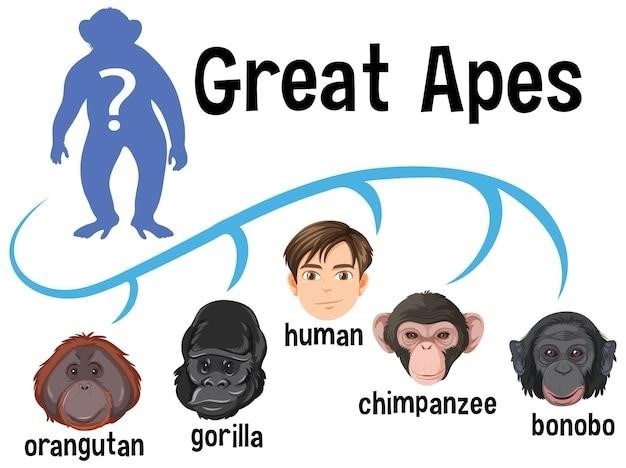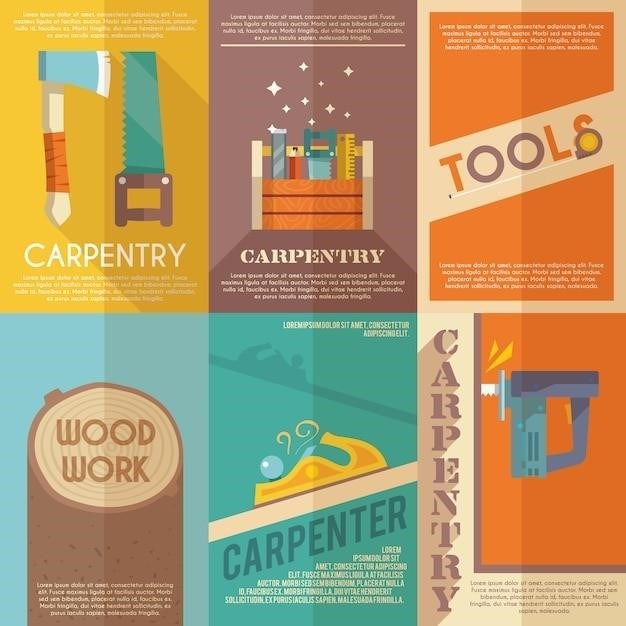Valve guide reamers are specialized tools used to resize valve guides in engines, ensuring proper valve stem seals and optimal engine performance. They play a crucial role in maintaining engine health by enabling precise guide resizing, which prevents excessive oil consumption and potential engine damage. Regular use of reamers helps mechanics achieve professional results, making them an essential component in engine repair and maintenance routines.

1.1 Definition and Purpose
Valve guide reamers are precision tools designed to accurately resize valve guides in internal combustion engines. Their primary purpose is to restore worn or damaged valve guides to the correct diameter, ensuring proper clearance for the valve stem. This process is essential for maintaining optimal engine performance, as improper valve guide clearance can lead to oil consumption, smoke emissions, and potential engine damage. By using a valve guide reamer, mechanics can achieve precise resizing, ensuring the valve operates smoothly and efficiently. Regular maintenance with these tools helps extend engine lifespan and prevents costly repairs. The reamer’s design allows for controlled material removal, making it a critical component in engine overhaul and repair processes.
1.2 Importance in Engine Maintenance
Valve guide reamers are vital for maintaining engine health by ensuring proper valve guide clearance, which prevents excessive oil consumption and reduces emissions. Worn valve guides can lead to oil leakage into the combustion chamber, causing blue smoke from the exhaust and decreased engine performance. Reaming restores the guide to its original specification, ensuring the valve stem seals properly and maintains efficient combustion. This process is crucial for preventing premature engine wear and improving overall engine efficiency. Regular use of valve guide reamers helps extend the lifespan of the engine and avoids costly repairs associated with damaged valves or guides. Properly maintained valve guides contribute to smoother engine operation, reduced oil consumption, and enhanced reliability.

Design and Construction of Valve Guide Reamers
Valve guide reamers are precision tools made from high-carbon steel or tungsten, designed for durability and accuracy. Their construction features ergonomic handles and cutting edges.
2.1 Materials Used
Valve guide reamers are typically constructed from high-carbon steel or tungsten carbide, materials known for their durability and ability to maintain sharp cutting edges. These materials ensure precision and longevity, allowing the reamers to withstand the rigors of frequent use in engine maintenance. The use of tungsten carbide, in particular, enhances the tool’s resistance to wear and tear, making it ideal for reaming operations. Proper material selection is crucial to ensure the reamer performs effectively, avoiding damage to the valve guide and maintaining engine performance. The choice of material directly impacts the tool’s efficiency and the quality of the reaming process.

2.2 Types of Reamers Available
Valve guide reamers come in various types to cater to different engine requirements and maintenance scenarios. The most common types include piloted reamers, which use a pilot to guide the tool through the valve guide, ensuring precise alignment. Fluted reamers are another popular option, featuring multiple cutting edges for efficient material removal. Additionally, adjustable reamers allow mechanics to fine-tune the diameter, offering flexibility for different valve guide sizes. Each type is designed to address specific challenges, such as repairing worn guides or achieving tighter tolerances. The choice of reamer depends on the engine’s specifications and the extent of the repair needed. Using the correct type ensures optimal results and extends engine lifespan. Proper selection is vital for effective valve guide maintenance.

How to Choose the Right Valve Guide Reamer
Selecting the right valve guide reamer involves understanding valve guide sizes and matching them to your engine’s specifications. Consider the type of reamer, such as piloted or fluted, to ensure proper alignment and efficient material removal. Additionally, think about the valve guide material, as different reamers are suited for specific materials like bronze. Always refer to your engine’s manual for exact measurements and compatibility to avoid misalignment or damage. Proper selection ensures optimal performance and extends engine lifespan.
3.1 Understanding Valve Guide Sizes
Valve guide sizes are critical for proper engine function, as they must align precisely with valve stems. Improper sizing leads to excessive wear, oil leakage, and reduced performance. Guides come in various diameters, typically measured in inches or millimeters, and must match the valve stem’s dimensions. For instance, a 0.5-inch guide is common in small engines, while larger engines may require 0.7-inch or more. Material thickness also varies, with bronze guides often being thicker for durability. Mechanics should use precision tools to measure existing guides accurately before selecting a reamer, ensuring a snug fit to prevent wobbling. Correct sizing ensures smooth operation and longevity of engine components.
3.2 Selecting the Correct Type for Your Engine
Choosing the right valve guide reamer depends on your engine’s specific needs. Reamers come in various types, including manual, piloted, and electric models, each suited for different scenarios. Manual reamers are cost-effective and ideal for small engines or occasional use, while piloted reamers offer greater precision, especially for worn or misaligned guides. Electric reamers are best for professionals or high-volume repairs due to their efficiency and speed. Consider the valve guide material (e.g., bronze or steel) and the engine’s specifications when selecting. Proper fitment ensures accurate resizing and prevents damage. Always consult your engine’s manual or a mechanic for guidance to avoid costly mistakes. This step is crucial for maintaining engine performance and longevity.

Installation and Usage Guidelines
Proper installation involves aligning the reamer correctly and using cutting oil. Rotate clockwise for precise resizing. Follow safety guidelines to avoid engine damage.
4.1 Step-by-Step Installation Process
The installation of a valve guide reamer requires careful preparation and execution. Begin by ensuring the engine is cool to avoid accidental start-ups. Remove the valves to access the guides fully. Apply cutting oil to the reamer and guide to reduce friction and prevent damage. Align the reamer with the valve guide, ensuring it is straight and properly seated. Slowly rotate the reamer clockwise while applying gentle pressure, maintaining steady control throughout the process. Continue until the guide reaches the desired size. After reaming, inspect the area for debris and clean thoroughly. Reinstall the valves and test the engine to ensure proper function. Always follow manufacturer instructions for specific tools and techniques.
4.2 Safety Precautions and Best Practices
When using a valve guide reamer, prioritize safety to avoid accidents and ensure effective results. Always wear protective gear, including gloves and safety goggles, to prevent injury from debris. Apply cutting oil to the reamer and guide to reduce friction and prevent overheating. Avoid using high-speed tools, as this can damage the guide or cause the reamer to slip. Keep the work area clean and well-lit to maintain visibility. Never force the reamer through the guide, as this can lead to misalignment or breakage. After reaming, inspect the area for debris and clean thoroughly before reassembling the engine. Follow the manufacturer’s instructions and consider consulting a professional if unsure. Proper technique prevents damage and ensures long-term engine performance. Ignoring safety protocols can result in costly repairs or personal injury.

Maintenance and Care of Valve Guide Reamers
Regularly clean and store valve guide reamers in a dry place to prevent rust. Apply cutting oil to maintain sharpness and extend tool life. Proper care ensures precision and durability.
5.1 Cleaning and Storage Tips
Proper cleaning and storage of valve guide reamers are essential to maintain their effectiveness. After use, coat the reamer with cutting oil to prevent rust and store it in a dry place. Avoid exposing the tool to harsh chemicals or extreme temperatures, as this can damage the material. Regularly inspect the reamer for signs of wear or damage and replace it if necessary. Store the reamer in a protective case or pouch to avoid accidental damage. Following these tips ensures the tool remains sharp and functional for future use, extending its lifespan and maintaining precision.
5.2 Troubleshooting Common Issues
When using valve guide reamers, common issues include improper sizing, excessive wear, or damage to the tool. If the reamer binds or stalls, it may indicate incorrect alignment or insufficient lubrication. To address this, ensure the reamer is properly seated and apply cutting oil generously. If the guide becomes oversized, it may require replacement. Dull reamers can be sharpened or replaced to maintain precision. Always check for debris or contamination in the valve guide before reaming. For damaged or worn reamers, consult the manufacturer for repair or replacement options. Regular maintenance and inspection can prevent many of these issues, ensuring optimal performance and longevity of both the tool and the engine. Proper handling and storage also play a key role in avoiding common problems.

Benefits and Drawbacks of Using Valve Guide Reamers
Valve guide reamers ensure precise sizing and improved engine performance but require skill and caution. Misuse can lead to engine damage, highlighting the need for expertise.
6.1 Advantages in Engine Performance
Valve guide reamers significantly enhance engine performance by ensuring precise resizing of valve guides, which improves valve stem sealing and reduces oil consumption. Properly reamed guides prevent excessive wear, minimizing the risk of engine damage. This process also ensures smoother engine operation by maintaining optimal valve alignment and reducing friction. Additionally, reaming helps restore original specifications, which is crucial for high-performance engines. By addressing worn or oversized guides, reamers contribute to better combustion efficiency and reduced emissions. Overall, using valve guide reamers is a cost-effective way to maintain engine health and ensure longevity, making them a vital tool for mechanics and engine enthusiasts alike. Regular use can prevent costly repairs and keep engines running at peak performance.
6.2 Potential Risks and Limitations
While valve guide reamers are essential for engine maintenance, their misuse can lead to significant risks. Improper reaming techniques may result in oversizing the guides, causing irreversible damage. This can lead to costly repairs, as replacing valve guides and stems may be necessary. Additionally, using low-quality reamers can introduce scratches or uneven surfaces, affecting valve performance. Over-reaming can weaken the guide’s structural integrity, potentially leading to engine failure. Furthermore, reaming without proper lubrication can generate excessive heat, damaging both the tool and the engine component. It is crucial to follow precise guidelines and use high-quality tools to mitigate these risks and ensure successful engine maintenance. Proper training and experience are recommended to avoid such complications.

Related Tools and Equipment
Pilot reamers ensure proper alignment, while honing tools refine valve guide surfaces for precise fitting. Additional equipment like hand drills and stabilizers aid in accurate reaming processes.
7.1 Pilot Reamers and Their Role
Pilot reamers are essential in valve guide maintenance, ensuring accurate alignment before reaming. They create a precise pilot hole, guiding the reamer for optimal results. This prevents misalignment, which could damage the engine. By stabilizing the reaming process, pilot reamers reduce the risk of uneven surfaces, ensuring smoother valve operation. Their role is critical for maintaining engine performance and longevity; Regular use of pilot reamers contributes to proper valve guide resizing, preventing issues like oil leakage and poor compression. They are a vital tool in any engine repair kit, offering reliability and precision in valve guide maintenance procedures.
7.2 Honing Tools for Valve Guides
Honing tools are used to finish and refine the surface of valve guides after reaming, ensuring a smooth and precise fit for the valve stem. These tools remove minor imperfections and create a polished surface, which improves lubrication and reduces wear on moving parts. Honing is typically done after reaming to achieve the final dimensions and surface finish. The process involves using an abrasive stone or diamond-coated tool to gently remove material, resulting in a high-quality finish. Proper honing ensures optimal valve guide performance, preventing issues like excessive oil consumption and poor engine compression. Honing tools are essential for maintaining engine efficiency and extending the lifespan of valve train components. Regular use of these tools helps mechanics achieve professional-grade results in engine repairs.

Frequently Asked Questions
- Do I really need a valve guide reamer? Yes, it ensures proper valve alignment and prevents engine damage.
- What should I replace while reaming? Typically, valve seals and guides may need replacement depending on wear;
8.1 Do I Really Need a Valve Guide Reamer?
Whether you need a valve guide reamer depends on the condition of your engine’s valve guides. If guides are worn or damaged, a reamer is essential for resizing them to ensure proper valve alignment and sealing. Without resizing, worn guides can lead to oil leakage, increased emissions, and reduced engine performance. Mechanics often recommend reaming during valve repairs to maintain precise tolerances. However, if guides are in excellent condition, reaming may not be necessary. Always consult a professional or service manual to determine the best course of action for your specific engine needs.
8.2 What Should I Replace While Reaming?
While reaming valve guides, it is often necessary to replace several components to ensure optimal engine performance. Valve stem seals are typically replaced to prevent oil leakage and wear. If the guides are severely damaged, new valve guides should be installed after reaming. Additionally, inspect and replace any worn or damaged valve guide seals, as they are critical for maintaining proper engine operation. In some cases, the valves themselves may need replacement if they are no longer seating properly. Always check for wear on the valve seats and guides, and consult a service manual for specific recommendations tailored to your engine. Replacing these components during reaming helps ensure a proper seal and prevents future issues.
Valve guide reamers are essential tools for maintaining engine health by ensuring proper valve function and preventing wear. Regular use enhances performance and longevity, making them a vital asset in engine repair and maintenance.
9.1 Summary of Key Points
Valve guide reamers are crucial for maintaining precise valve guide dimensions, ensuring optimal engine performance and preventing wear. They are designed to restore or resize valve guides, addressing issues like excessive oil consumption and valve train noise. Proper selection and use of reamers are vital, as they directly impact engine longevity. Regular maintenance and care of these tools, including cleaning and storage, ensure their effectiveness. While reamers offer significant benefits, they also carry risks if misused, such as guide damage. Related tools like pilot reamers and honing tools complement their function, aiding in precise guide repair. Addressing common questions, reamers are essential for maintaining engine health, and understanding their use ensures successful repairs.
9.2 Final Thoughts on Valve Guide Reamers
Valve guide reamers are indispensable tools in engine maintenance, offering precise solutions for valve guide restoration. Their ability to ensure proper fitment and prevent wear makes them a cornerstone of engine repair. While they require careful selection and use, the benefits they provide in maintaining engine performance and longevity are significant. As with any specialized tool, understanding their proper application and limitations is key to successful outcomes. By adhering to best practices and maintaining these tools, mechanics can achieve professional-grade results. Ultimately, valve guide reamers are a vital investment for anyone serious about engine health and performance, ensuring reliability and efficiency for years to come.

























